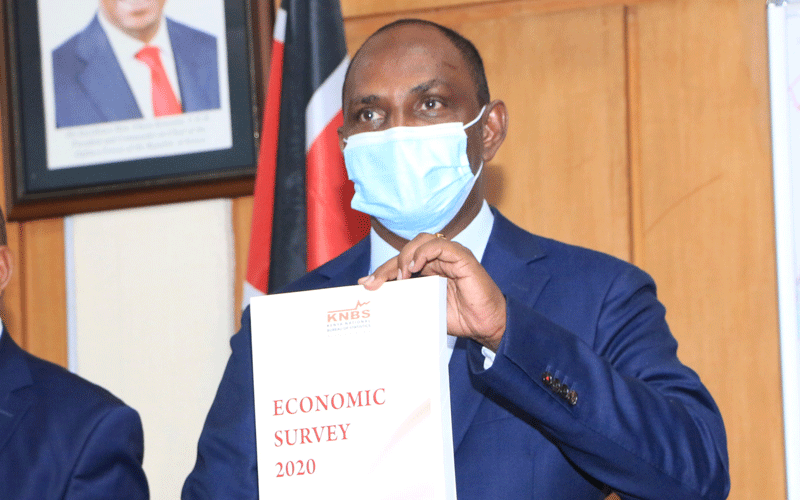Agriculture performs poorly riding on the back of drought

Lewis Njoka @LewisNjoka
Agriculture sector growth declined by half last year due to extreme weather which resulted in underperformance in the cash crops sub-sector, Treasury Cabinet Secretary Ukur Yatani said.
Speaking when he launched the Economic Survey 2020 yesterday, Yatani said agriculture, forestry and fishing sectors grew by 3.6 per cent in 2019 compared to 6 per cent in 2018.
The reduced growth will have a major effect on the livelihoods of Kenyans considering the significant role agriculture plays in the economy.
According to the Food and Agriculture Authority (FAO), agriculture contributes 26 per cent of Kenya’s gross domestic product (GDP) directly and another 27 per cent indirectly through linkages with other sectors.
The sector employs more than 40 per cent of Kenya’s population and more than 70 per cent of rural people.
It accounts for 65 per cent of the country’s export earnings, and provides employment, income and food security needs for more than 80 per cent of the population
Extreme weather
“The decelerated growth was occasioned by extreme weather phenomenon characterised by drought during the first half of 2019 followed by high rainfall in the second half of the year that culminated in reduced production of selected crops,” said Yatani.
During the period, tea production decreased to 458,500 tonnes down from 493,000 tonnes in 2018, a 6.9 per cent decline.
Total cane production decreased to 4.6 million tonnes last year, down from 5.3 million tonnes in 2018, a 12.5 per cent reduction.
Similarly, maize production decreased by 10.8 per cent to 39.8 million bags in 2019.
However, some sub-sectors registered improved performance.
Coffee production rose to 45,000 tonnes up from 41,400 tonnes registered in 2018.
Horticultural exports increased by 1.8 per cent to stand at 328,300 tonnes up from 322,600 tonnes in 2018.
The volume of milk deliveries to processors increased by 5.3 per cent to 668.2 million litres in 2019 up from 634.3 million litres in 2018.
“The sector, however, benefitted from modest increase in production of potatoes, rice and wheat as well as significant improved production of drought resistant crops such as sorghum and millet in 2019,” said Yatani.
Despite the reduction in projected growth, Treasury will be banking on the sector to mitigate the effects of Covid-19 on the economy.
Yatani said the onset of the long rains in March, which were well spread across the country, was timely with forecasts pointing to near normal rains in most parts of the country.
He said while the country experienced an invasion by desert locusts earlier in the year, the government has managed to mitigate their negative impact on agriculture.
However, FAO, in a report on the fight against the pest, warned that the heavy rains would aid in the infestation by the locusts thus affecting food security.
“The current situation in East Africa remains extremely alarming as hoppers band and an increasing number of new swarms are forming in Kenya, Southern Ethiopia and Somalia,” the UN report said.
Locust infestation
The UN agency said although ground and aerial control operations were ongoing, widespread rains would help new swarms survive, mature and lay eggs.
“During May, the eggs will hatch into hoppers bands that will form new swarms in late June and July which coincides with the start of the long rains harvest.
In March, numerous hopper bands continued to develop causing an increasing number of immature swarms to form and mature. Infestations were mainly in Turkana, Marsabit, Samburu, Isiolo, Laikipia, Meru and Embu,” the UN food agency said.
Kenya’s GDP grew by 5.4 per cent in 2019 down from 6.3 per cent in 2018 with the growth more pronounced in the service sector.











